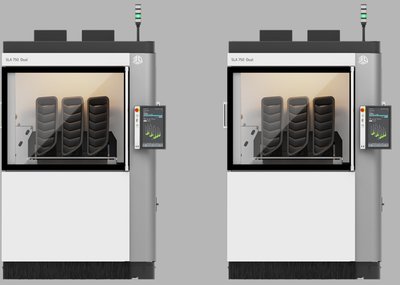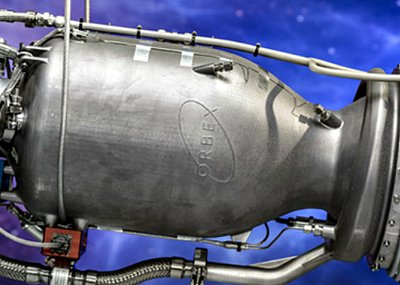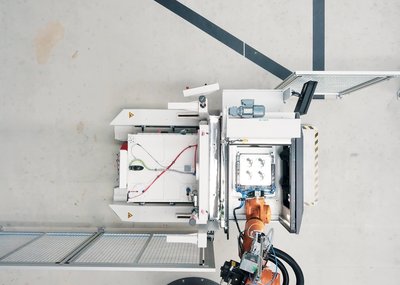- ProJet® MJP 2500 IC eliminates the cost and time of tooling and storage with 3D printed wax patterns that can be used seamlessly in existing foundry casting processes
- Enables affordable design iterations and improved design functionality for the resulting metal cast components
3D Systems (NYSE: DDD), the originator of 3D printing, today announced availability of its new 3D printing solution for investment casting professionals, the ProJet® MJP 2500 IC, which produces RealWax™ patterns in a fraction of the time and cost compared to traditional pattern production. Drawing on 3D Systems' deep expertise and unique workflow approach including software, hardware, materials and services, this digital foundry solution is designed to transform a centuries-old manufacturing process – enabling significant time and cost savings and creating new possibilities for the types of parts that can be cast.
Typical production time for a 3D printed wax pattern is a few hours or less; no time or money is wasted on an injection molding process for traditional pattern tools. Cost reductions for initial patterns can be significant when the cost of traditional injection molding tooling is taken into account. For example, in a cost comparison analysis conducted by Mueller Additive Manufacturing Solutions, a pattern tool for a mechanical cam cost $6,050 while the 3D printed equivalent pattern cost less than $25 - with the only lead time being the short time to print the pattern.
An ideal solution for the production of metal cast components, the ProJet MJP 2500 IC is well suited to span production needs from the iterative, initial design phase to bridge manufacturing and low volume production. Working in a digital workflow provides complete design freedom, enabling wax patterns to benefit from topology optimization, lightweighting, and part consolidation. Design files are prepared for 3D printing and managed with 3D Sprint™ software. The patterns are produced in VisiJet® M2 ICast, 100% wax material which delivers the same melt and burn-out characteristics of standard casting waxes and fits seamlessly into existing foundry protocols.
"The wax patterns produced on the ProJet MJP 2500 IC are incredible. We are able to produce parts that were previously not able to be produced using traditional wax injection molding. Additionally, the part quality, surface finish and accuracy have allowed us to move more of our production to this product. Finally, the complexity of parts that we can now produce has enabled new functionality that we can offer our customers," said Al Hinchey, 3D print manager, Invest Cast, Inc.
3D Systems' MultiJet Printing (MJP) technology enables smooth surface finishes, sharp edges and fine details with high fidelity and repeatability to hold tight tolerances. Design iterations and design optimization for complex parts can now be done quickly and economically.
"In keeping with 3D Systems' strategy of transforming manufacturing with optimized additive manufacturing solutions, we developed the ProJet MJP 2500 IC to improve both the economics and functionality of investment casting patterns and the resulting parts. According to Mueller Additive Manufacturing Solutions, the global investment casting market is valued at nearly $14 billion which includes parts for the aircraft and automotive industries. The ProJet MJP 2500 IC not only eliminates the need for injection-molded tools, it could potentially increase the casted part functionality while reducing part weight, both critical factors for improving part efficiency," said Mike Stanicek, vice president, product management, plastics, 3D Systems. "This also means that service foundries can now charge a premium for parts produced in days instead of weeks. The ProJet MJP 2500 IC is a genuine game-changer for all industries that use investment casting."
The ProJet MJP 2500 IC will be on display at 3D Systems booth #3 at the Investment Casting Institute Technical Conference and Exposition, October 23 – 24.
Forward-Looking Statements
Certain statements made in this release that are not statements of historical or current facts are forward-looking statements within the meaning of the Private Securities Litigation Reform Act of 1995. Forward-looking statements involve known and unknown risks, uncertainties and other factors that may cause the actual results, performance or achievements of the company to be materially different from historical results or from any future results or projections expressed or implied by such forward-looking statements. In many cases, forward looking statements can be identified by terms such as "believes," "belief," "expects," "may," "will," "estimates," "intends," "anticipates" or "plans" or the negative of these terms or other comparable terminology. Forward-looking statements are based upon management's beliefs, assumptions and current expectations and may include comments as to the company's beliefs and expectations as to future events and trends affecting its business and are necessarily subject to uncertainties, many of which are outside the control of the company. The factors described under the headings "Forward-Looking Statements" and "Risk Factors" in the company's periodic filings with the Securities and Exchange Commission, as well as other factors, could cause actual results to differ materially from those reflected or predicted in forward-looking statements. Although management believes that the expectations reflected in the forward-looking statements are reasonable, forward-looking statements are not, and should not be relied upon as a guarantee of future performance or results, nor will they necessarily prove to be accurate indications of the times at which such performance or results will be achieved. The forward-looking statements included are made only as the date of the statement. 3D Systems undertakes no obligation to update or review any forward-looking statements made by management or on its behalf, whether as a result of future developments, subsequent events or circumstances or otherwise.
Source: 3D Systems
×




